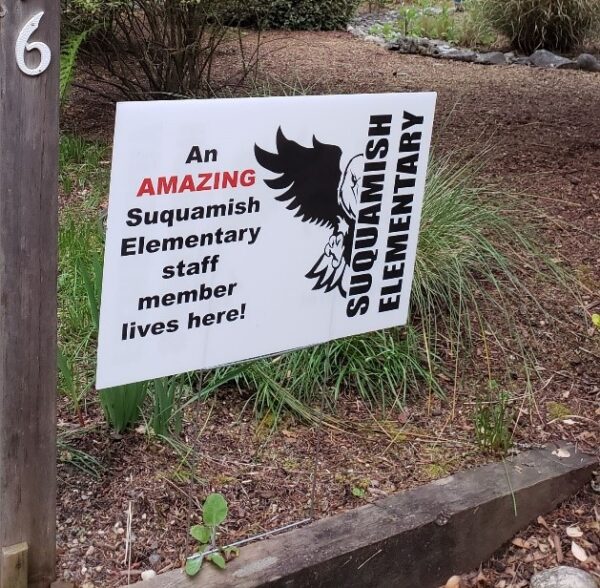THEN
Almost everything I need to teach math or ELA or science or social studies or health is in my classroom. Student books. Math tests. ELA papers.
NOW
I sent some of the books home with the kids on that ill-fated Friday the 13th: math, science, and Roald Dahl’s autobiography Boy. Per instructions, I sent home papers for six weeks’ worth of work.
The work I sent home immediately became “optional” once we learned that we could not require or grade any work sent home. Then, a couple of weeks later, we learned we could start instruction again.
The additional books and papers I want to use with my students for the rest of the year are in my classroom. There is no way to get them to my students now.
I have to check for coronavirus-era copyright access for materials for my students. For some of the materials, I have to scan (once I get permission) stacks of pages and email them to families. (At least I have the stuff at home!) I have to search the web for open-source materials.
THEN
I think of teaching as a performance art. I make eye contact with my kids as I teach. I respond to their body language, their facial expressions.
I walk around the room, monitoring multiple small groups. I manage behaviors quietly, usually with humor.
NOW
Zoom does not lend itself to audience connection. A kid’s screen goes blank. I call on the child and get no answer. Is it a tech issue? Or are they playing a video game while we are meeting? There’s no way to tell.
I share a screen with the class. Immediately 80% of the student faces disappear from my monitor, leaving a single column down the side showing my face and a handful of others. I can’t see how most of the students are responding to the things I am sharing with them.
Suddenly marks appear on the shared screen. I know a student is adding those marks. Which student? Who knows?—and I have no way to stop it!
It’s a frustrating way to teach a whole class. I prefer Zoom for tutoring or for small groups.

THEN
I have a super-organized classroom. Kids know what to do, at school and at home. Parents know what to expect from one week to the next. Substitutes and parent volunteers come in and go to work seamlessly.
NOW
I know we have all felt the discombobulation of building the plane in the wind tunnel during a hurricane while a tornado is bearing down on us. Yikes!
I tell parents what to expect. I start to establish routines. Then new guidance arrives from OSPI. Or the district changes a procedure.
I feel like I am spending half my time answering phone calls and emails and text messages (“Um, again, I’m not supposed to communicate with parents by text—can you email me please?”), and most of the time people are asking for clarification.
It’s no one’s fault.
But there’s been a lot of confusion.
THEN and NOW

I work hard to make learning fun and engaging—it’s one of my core values. Now that students are home, I send links and suggestions of things they can do to increase the fun factor. This week I sent home a bunch of creativity links and challenges.
Parents are doing a terrific job of supporting their children in learning, not just with the material I send home but also with extensions into individual student interests, including: robotics, coding, foreign languages, learning to play instruments, drawing, cooking, gardening.
Some students are finding ways to support the local community. One girl and her brother “are selling eggs and garden goods to our neighbors and people that drive down our lane. Half of the money we make goes to the local food bank.” So far, they have made over $100.
As one student said, “After a few weeks of all this, I am so occupied with learning, I am not even worried about the Coronavirus anymore.”
We build relationships. Of course now, it’s long distance. Kids look forward to our Zoom meetings because they get to see each other every day and share what’s going on in their lives. I write notes to kids and make calls. I get notes back.
We still do art.

At all times, our school has a highly supportive PTSA. Typically, Educator Appreciation Week would involve posters all over the school, coffee (or tea) delivered to classrooms, and food. Lots and lots of food. This year the PTSA got creative. They made signs and drove all over the county to post them in the yards of every staff member.
Yes, we do feel appreciated!
For those who want them, here are a variety of links to fun activities:
Math
Youcubed at Stanford U
Creativity Videos
Obvious to You. Amazing to Others
The Global Cardboard Challenge—What ideas could YOU come up with?
Do Creativity Challenge #3 from Constraint Drives Creativity.
Check out wonderopolis.
Fill out a wonder page.
Post some of your ideas on a padlet. Share your padlet with some of your friends and family.
Celebrate science!
Earth Day activities
NTSA
Daily Do
Photosynthesis
experiment
“Home Science Kid”
Halley’s Comet Meteor Shower
Visit zoos through their webcams
- Harbor Seals and Sea Otters (Seattle Aquarium)
- Grizzly Bear, Tiger and Bats (Woodland Park Zoo)
- Beluga Whale, Puffins, Sea Lions, Gators, Penguins and more (Georgia Aquarium)
- Pandas, Elephants, Lions, Naked Mole Rats and more (Smithsonian’s National Zoo and Conservation Biology Institute)
- Baboons, Giraffes, Elephants, Butterflies and more (San Diego Zoo)
- Sharks, Sea Turtles, Jelly Fish, Penguins and more (Monterey Bay Aquarium)
Art
BIMAfromHome for lessons and events from Bainbridge Island Museum of Art
PE
Epic has some great yoga and dance resources.
The then and now are stark in many ways, you are correct.
Thank your for all those links at the bottom!